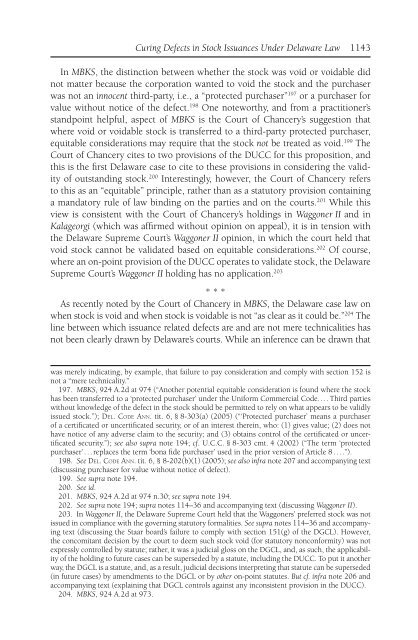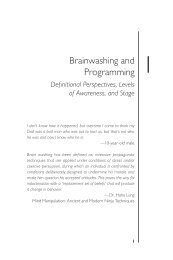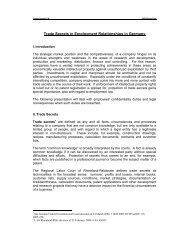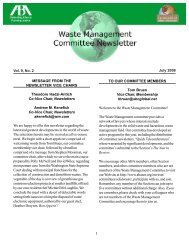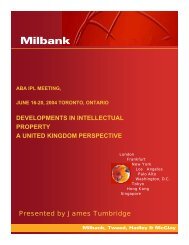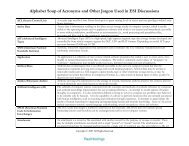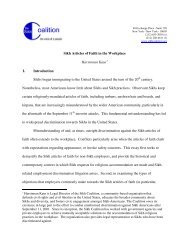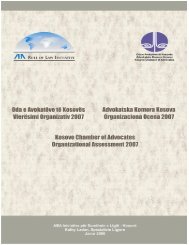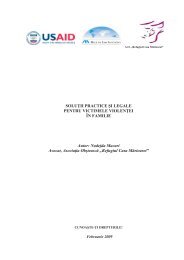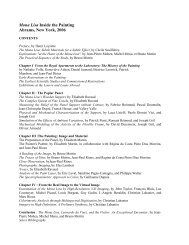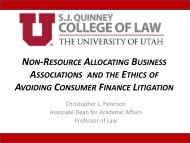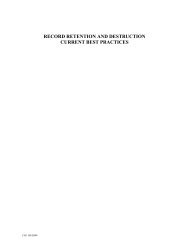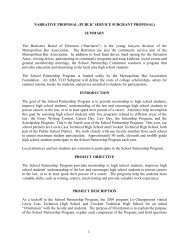Curing Defects in Stock Issuances - American Bar Association
Curing Defects in Stock Issuances - American Bar Association
Curing Defects in Stock Issuances - American Bar Association
You also want an ePaper? Increase the reach of your titles
YUMPU automatically turns print PDFs into web optimized ePapers that Google loves.
<strong>Cur<strong>in</strong>g</strong> <strong>Defects</strong> <strong>in</strong> <strong>Stock</strong> <strong>Issuances</strong> Under Delaware Law 1143<br />
In MBKS, the dist<strong>in</strong>ction between whether the stock was void or voidable did<br />
not matter because the corporation wanted to void the stock and the purchaser<br />
was not an <strong>in</strong>nocent third-party, i.e., a “protected purchaser” 197 or a purchaser for<br />
value without notice of the defect. 198 One noteworthy, and from a practitioner’s<br />
standpo<strong>in</strong>t helpful, aspect of MBKS is the Court of Chancery’s suggestion that<br />
where void or voidable stock is transferred to a third-party protected purchaser,<br />
equitable considerations may require that the stock not be treated as void. 199 The<br />
Court of Chancery cites to two provisions of the DUCC for this proposition, and<br />
this is the fi rst Delaware case to cite to these provisions <strong>in</strong> consider<strong>in</strong>g the validity<br />
of outstand<strong>in</strong>g stock. 200 Interest<strong>in</strong>gly, however, the Court of Chancery refers<br />
to this as an “equitable” pr<strong>in</strong>ciple, rather than as a statutory provision conta<strong>in</strong><strong>in</strong>g<br />
a mandatory rule of law b<strong>in</strong>d<strong>in</strong>g on the parties and on the courts. 201 While this<br />
view is consistent with the Court of Chancery’s hold<strong>in</strong>gs <strong>in</strong> Waggoner II and <strong>in</strong><br />
Kalageorgi (which was affi rmed without op<strong>in</strong>ion on appeal), it is <strong>in</strong> tension with<br />
the Delaware Supreme Court’s Waggoner II op<strong>in</strong>ion, <strong>in</strong> which the court held that<br />
void stock cannot be validated based on equitable considerations. 202 Of course,<br />
where an on-po<strong>in</strong>t provision of the DUCC operates to validate stock, the Delaware<br />
Supreme Court’s Waggoner II hold<strong>in</strong>g has no application. 203<br />
* * *<br />
As recently noted by the Court of Chancery <strong>in</strong> MBKS, the Delaware case law on<br />
when stock is void and when stock is voidable is not “as clear as it could be.” 204 The<br />
l<strong>in</strong>e between which issuance related defects are and are not mere technicalities has<br />
not been clearly drawn by Delaware’s courts. While an <strong>in</strong>ference can be drawn that<br />
was merely <strong>in</strong>dicat<strong>in</strong>g, by example, that failure to pay consideration and comply with section 152 is<br />
not a “mere technicality.”<br />
197. MBKS, 924 A.2d at 974 (“Another potential equitable consideration is found where the stock<br />
has been transferred to a ‘protected purchaser’ under the Uniform Commercial Code. . . . Third parties<br />
without knowledge of the defect <strong>in</strong> the stock should be permitted to rely on what appears to be validly<br />
issued stock.”); DEL. CODE ANN. tit. 6, § 8-303(a) (2005) (“ ‘Protected purchaser’ means a purchaser<br />
of a certifi cated or uncertifi cated security, or of an <strong>in</strong>terest there<strong>in</strong>, who: (1) gives value; (2) does not<br />
have notice of any adverse claim to the security; and (3) obta<strong>in</strong>s control of the certifi cated or uncertifi<br />
cated security.”); see also supra note 194; cf. U.C.C. § 8-303 cmt. 4 (2002) (“The term ‘protected<br />
purchaser’ . . . replaces the term ‘bona fi de purchaser’ used <strong>in</strong> the prior version of Article 8 . . . .”).<br />
198. See DEL. CODE ANN. tit. 6, § 8-202(b)(1) (2005); see also <strong>in</strong>fra note 207 and accompany<strong>in</strong>g text<br />
(discuss<strong>in</strong>g purchaser for value without notice of defect).<br />
199. See supra note 194.<br />
200. See id.<br />
201. MBKS, 924 A.2d at 974 n.30; see supra note 194.<br />
202. See supra note 194; supra notes 114–36 and accompany<strong>in</strong>g text (discuss<strong>in</strong>g Waggoner II ).<br />
203. In Waggoner II, the Delaware Supreme Court held that the Waggoners’ preferred stock was not<br />
issued <strong>in</strong> compliance with the govern<strong>in</strong>g statutory formalities. See supra notes 114–36 and accompany<strong>in</strong>g<br />
text (discuss<strong>in</strong>g the Staar board’s failure to comply with section 151(g) of the DGCL). However,<br />
the concomitant decision by the court to deem such stock void (for statutory nonconformity) was not<br />
expressly controlled by statute; rather, it was a judicial gloss on the DGCL, and, as such, the applicability<br />
of the hold<strong>in</strong>g to future cases can be superseded by a statute, <strong>in</strong>clud<strong>in</strong>g the DUCC. To put it another<br />
way, the DGCL is a statute, and, as a result, judicial decisions <strong>in</strong>terpret<strong>in</strong>g that statute can be superseded<br />
(<strong>in</strong> future cases) by amendments to the DGCL or by other on-po<strong>in</strong>t statutes. But cf. <strong>in</strong>fra note 206 and<br />
accompany<strong>in</strong>g text (expla<strong>in</strong><strong>in</strong>g that DGCL controls aga<strong>in</strong>st any <strong>in</strong>consistent provision <strong>in</strong> the DUCC).<br />
204. MBKS, 924 A.2d at 973.


